Most businesses all over the world use Microsoft 365 services. Microsoft Teams, one of the popular Microsoft 365 services, is a persistent chat-based collaboration platform complete with document sharing, online meetings, and other useful features for business communications.
If you’re looking to learn the basics of Microsoft Teams and want some tips on how to use it more effectively, have a look at our blog series Microsoft Teams Beginners Guide
In this post, we will look into the step-by-step process of configuring Microsoft Teams Backup and Recovery using BDRSuite.
About BDRSuite:
BDRSuite is a Comprehensive and Cost-Effective Backup & Disaster Recovery Solution designed to protect data that span across Data Centers/Private Cloud (VMware, Hyper-V, Windows, Linux, Applications & Databases), Public Cloud (AWS), SaaS (Microsoft 365, Google Workspace), and Endpoints (Windows, Mac).
How to Backup Microsoft Teams
Step 1: Setup BDRSuite Backup Server
Download and Install BDRSuite Backup Server. Click here for installation instructions.
Step 2: Configuring Backup Repository to Store Backup Data
- Navigate to Backup Server Tile -> Block Storage (or) Backup Server Tile -> Object Storage
- BDRSuite supports a wide range of scalable storage targets as backup repositories:
- Block Storages – Direct, NAS, SAN
- Object Storages – AWS S3, Azure Blob, & S3 Compatible storage like Wasabi, Backblaze, etc
Refer to BDRSuite User Guide for more details on backup repository configuration
Step 3: Add Microsoft 365 Organization
1. Log in to the BDRSuite Server console and click on the Tab: Microsoft 365/Google Workspace.
2. Navigate to Data Sources -> Add Microsoft 365 Organization page and click on the ‘Add Microsoft 365 Organization’ button which opens a dialog box.
3. On the first page – ‘Add Method Selection’, you will have three different methods to add your M365 organization on the BDRSuite.
- Adding Microsoft organization account and authorizing BDRSuite automatically
- Adding a Microsoft organization account and authorizing BDRSuite manually
- Adding a Microsoft organization account and authorizing BDRSuite using PowerShell Scripts
Note: Please refer to the attached PDF for more information on each method.
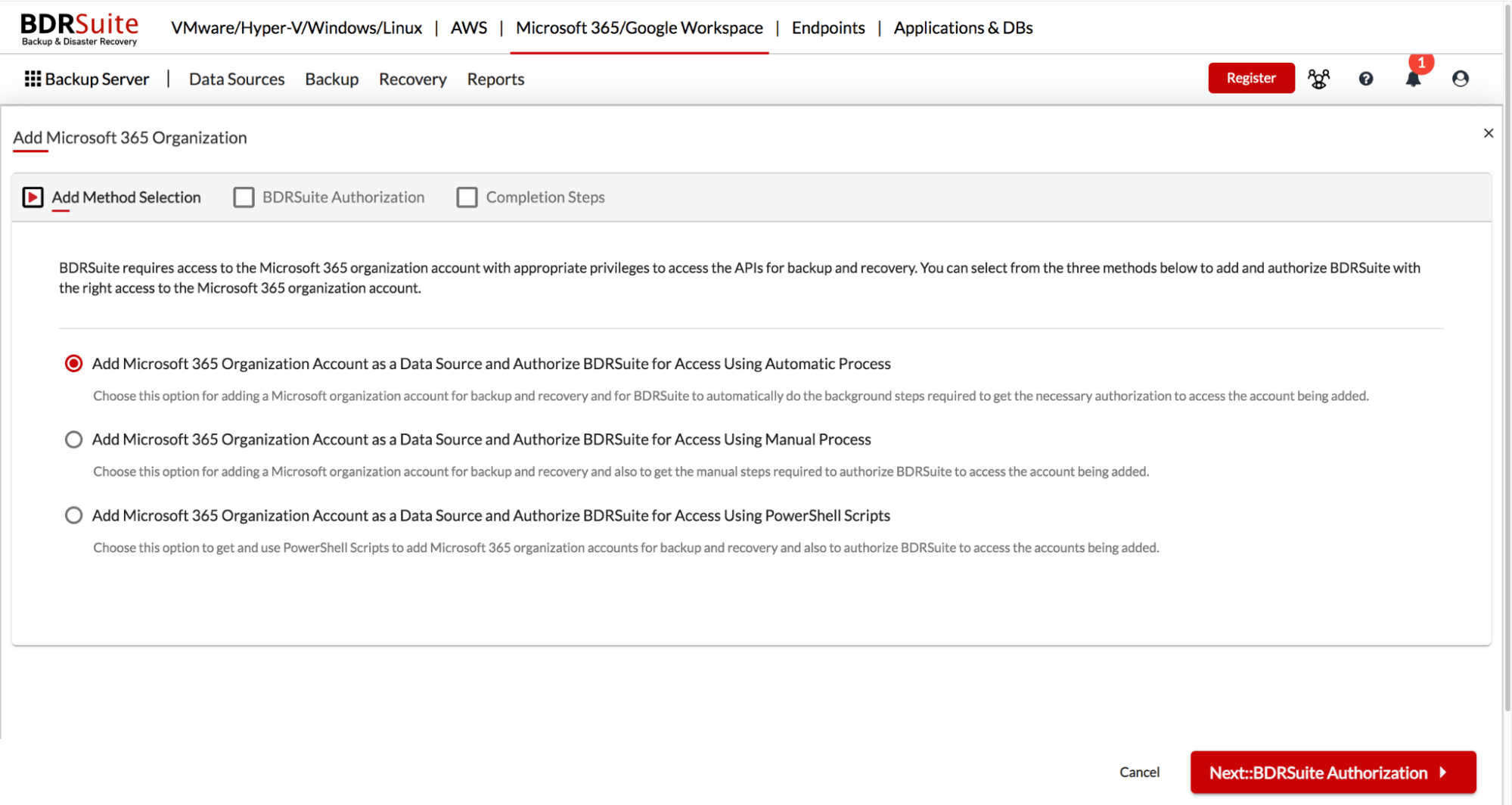
4. Once your Microsoft 365 Organization(s) are saved to BDRSuite, you can then configure backup for your entire organization (or) specific objects in your organization.
Step 4: Configuring Backup for Microsoft Teams
1. Navigate to Backup -> Configure Backup -> Microsoft 365 page.
2. Basic Job Details page: Specify a name for the backup job, select the backup repository where you want to store the data, and then provide a job description (optional). Then, click Next.
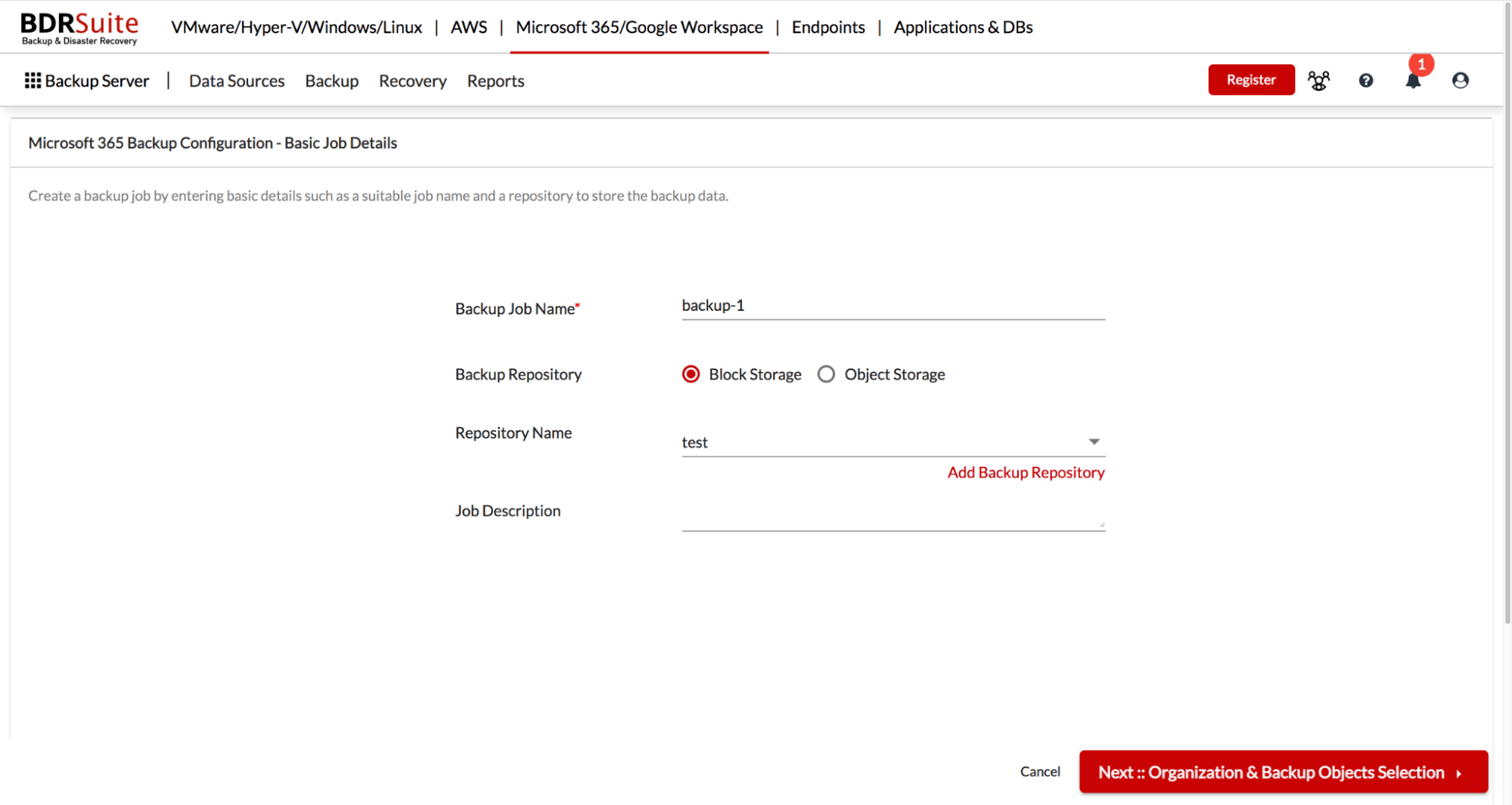
3. Organization & Backup Object Selection: In this screen, you can select an entire organization or only the objects you want to back up. Here we will select Teams and then proceed to the next step.
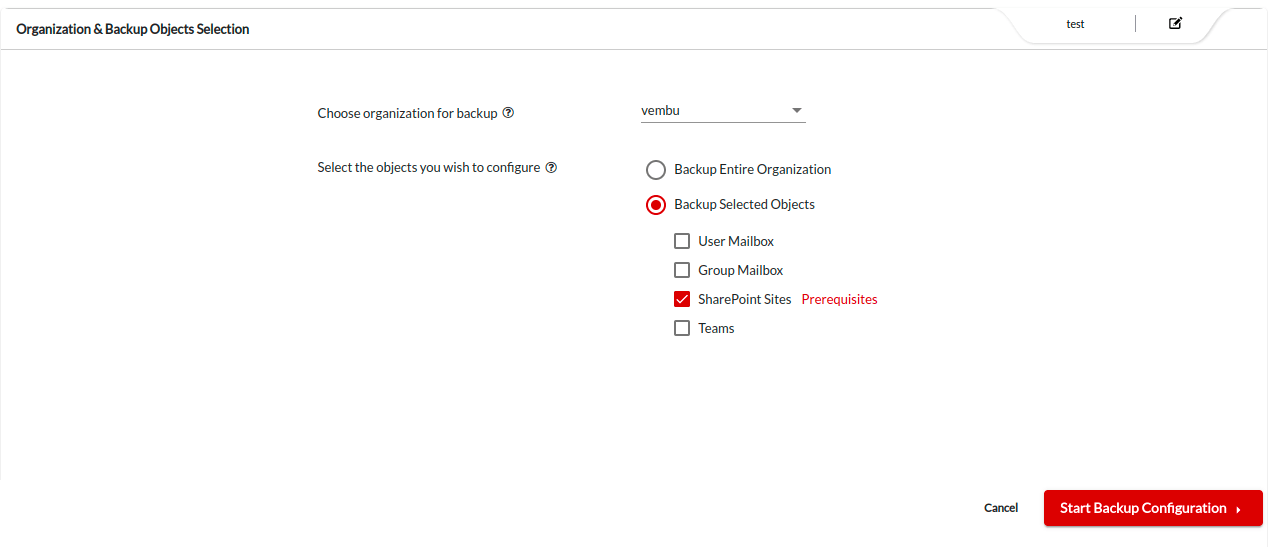
4. Teams: All the Teams available in your Microsoft 365 organization will be listed on this page. You can select all the Teams or select only specific Teams from the list or backup. You can use the “Search” option to quickly find the teams you want to back up.
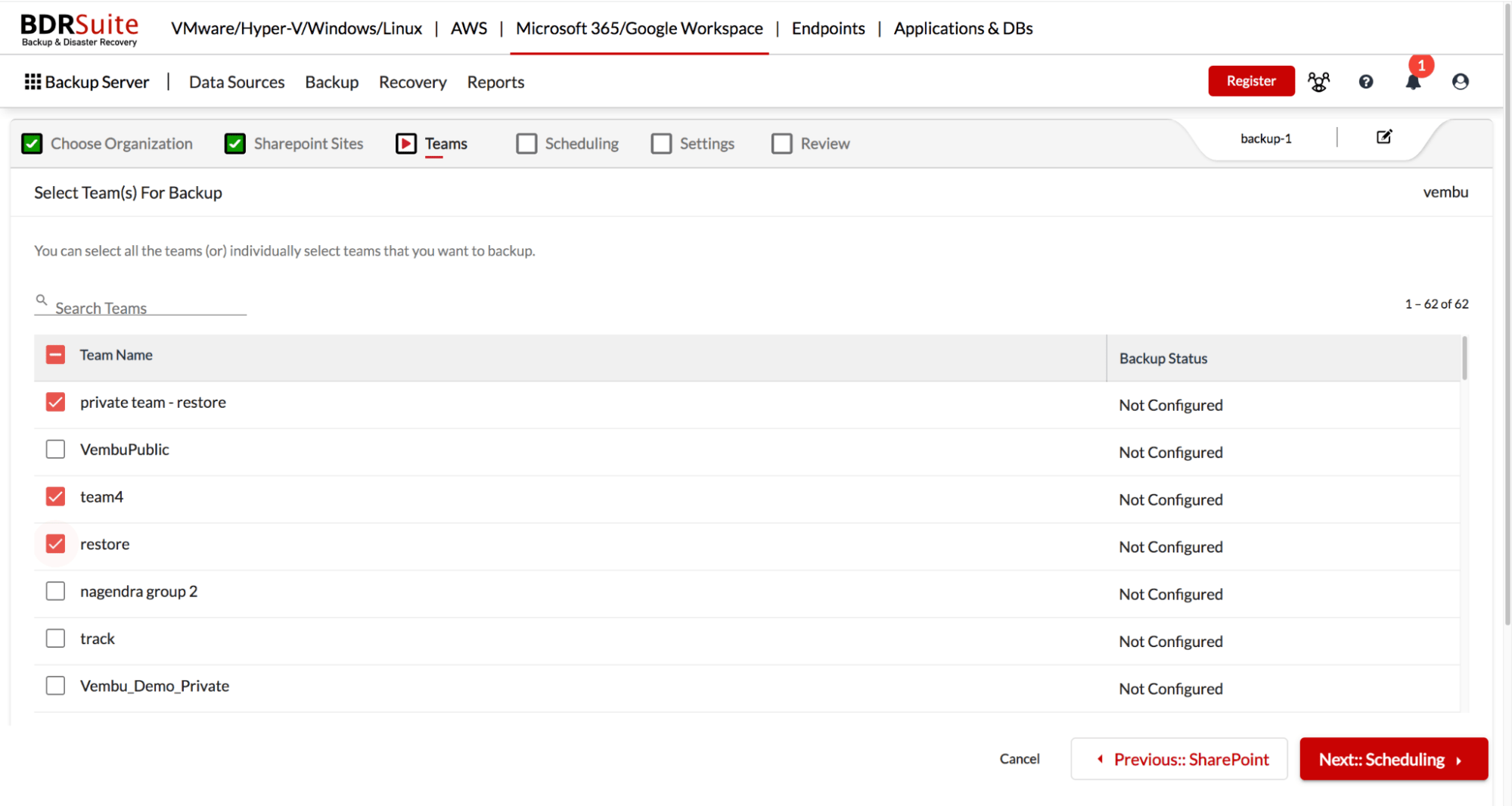
5. Scheduling: On this screen, you need to configure how frequently you want to back up. You can backup every few mins/hours, daily/weekly/monthly basis, and even one-time. You can also set retry attempts on backup failure and wait time on the same page.
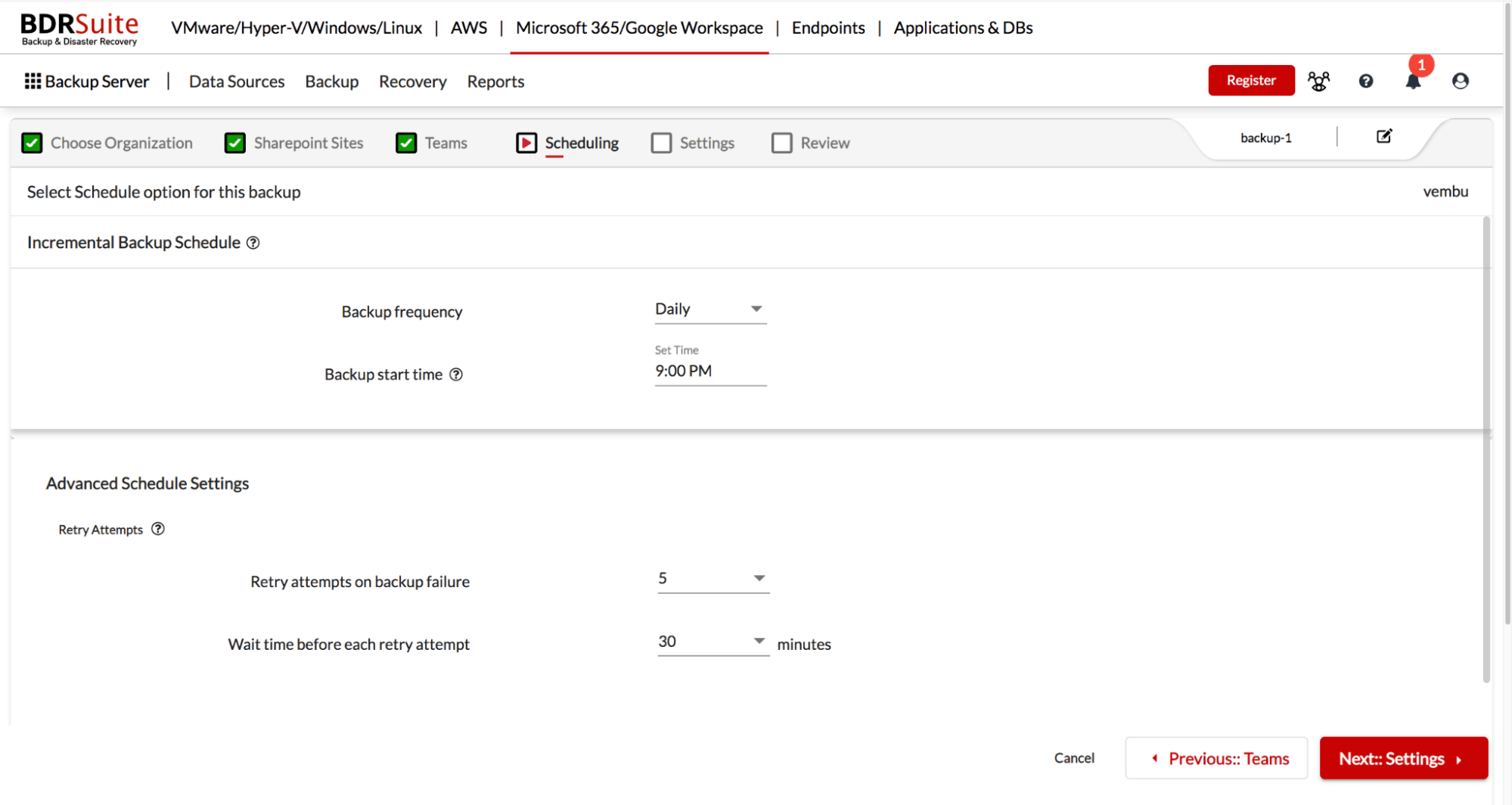
6. Settings: On this page, you will be able to configure Compression and Retention settings for this backup.
- By default, all the backup data is compressed while stored in the backup repository. If disabled the original size of the backup data will be stored
- Retention allows you to retain only a specified number of versions of your backup data (Teams). You can customize the retention settings based on your requirements
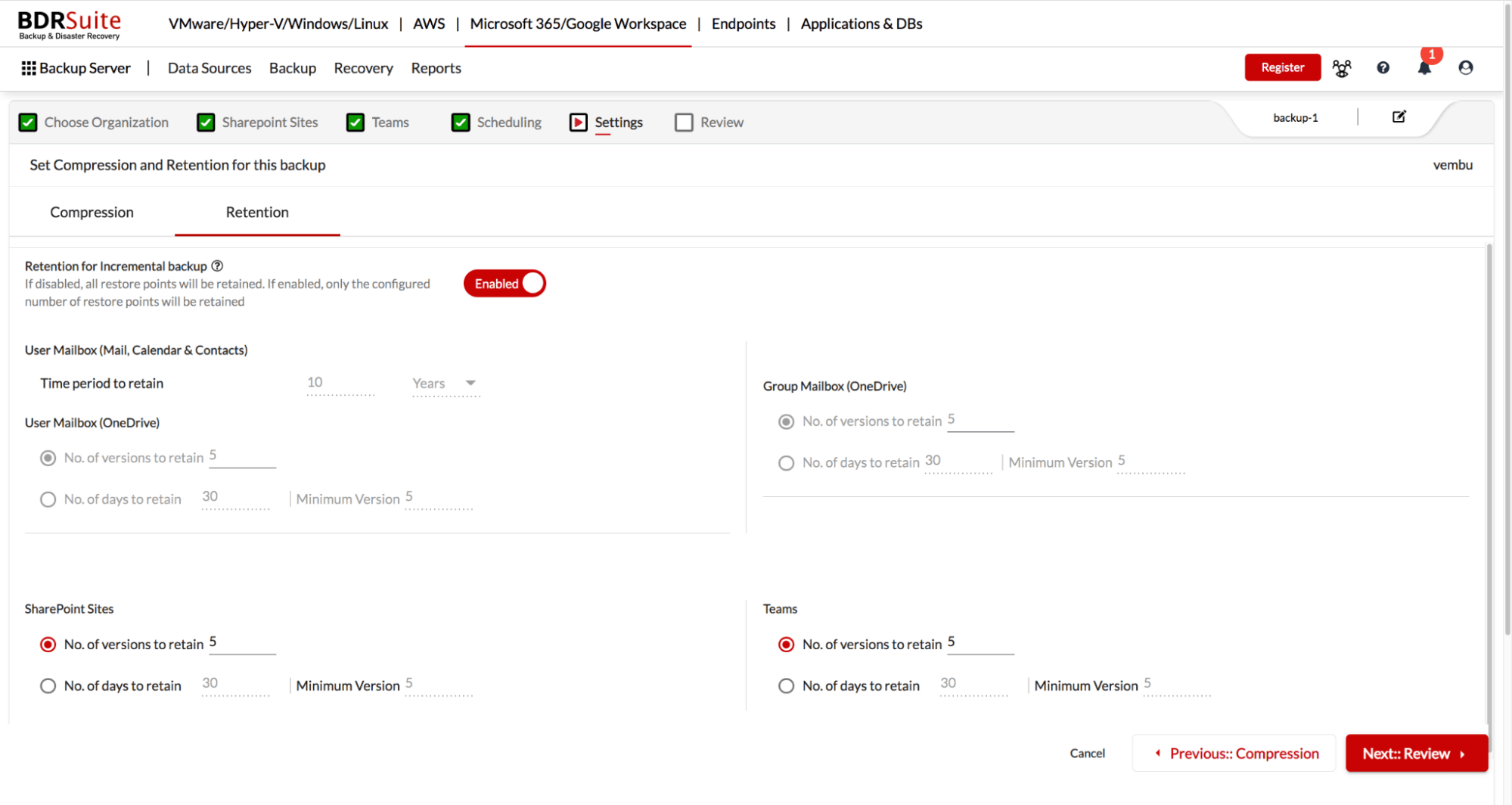
7. Review: Lastly, review the backup configuration and save the backup job. The backup will start to run based on the configured scheduling policy (or) you can immediately schedule the job by enabling the checkbox “ Run this backup job after saving”.
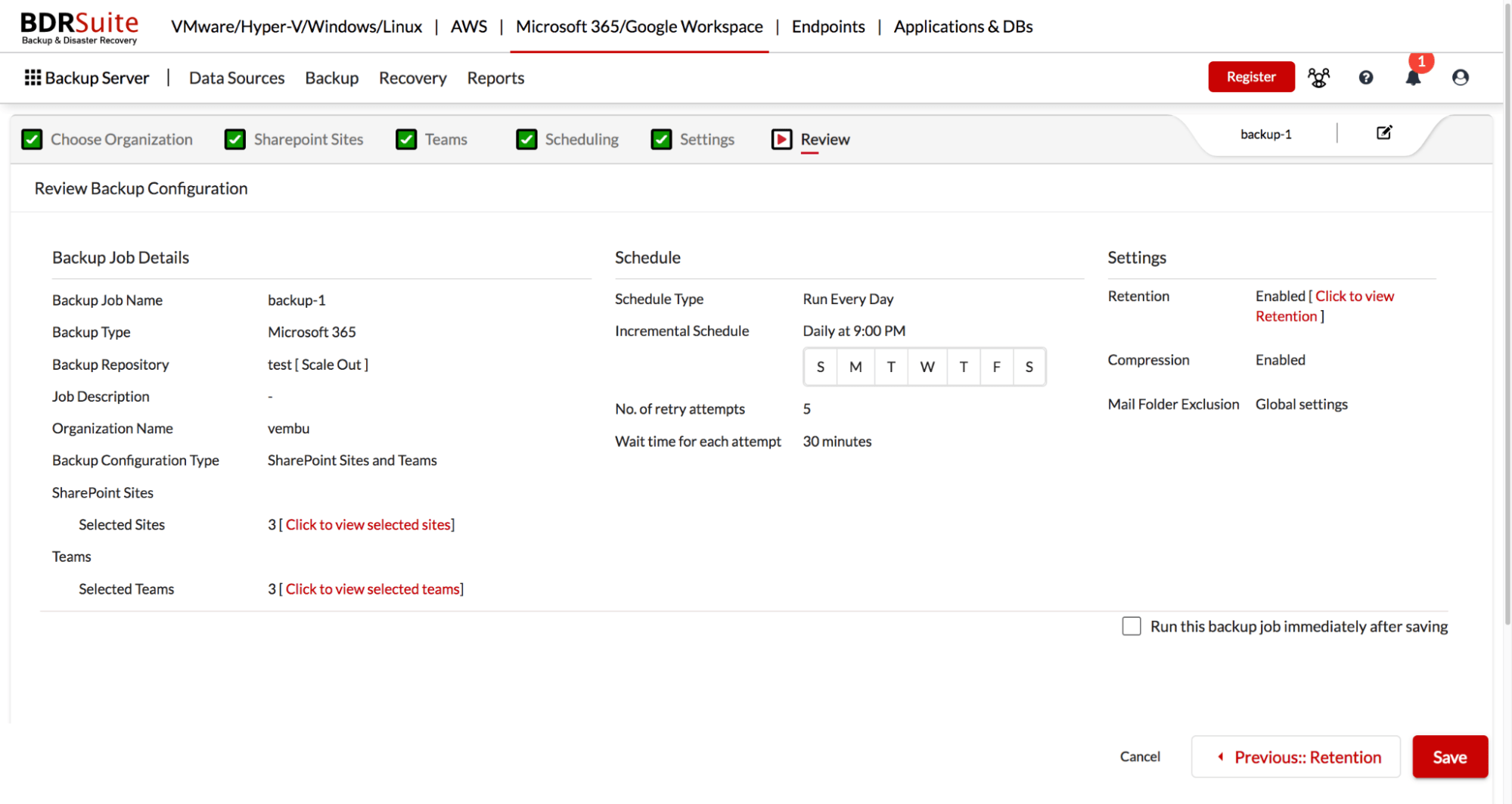
You can also view the backup progress when the backup is scheduled. Refer to the screenshot below for sample backup progress:
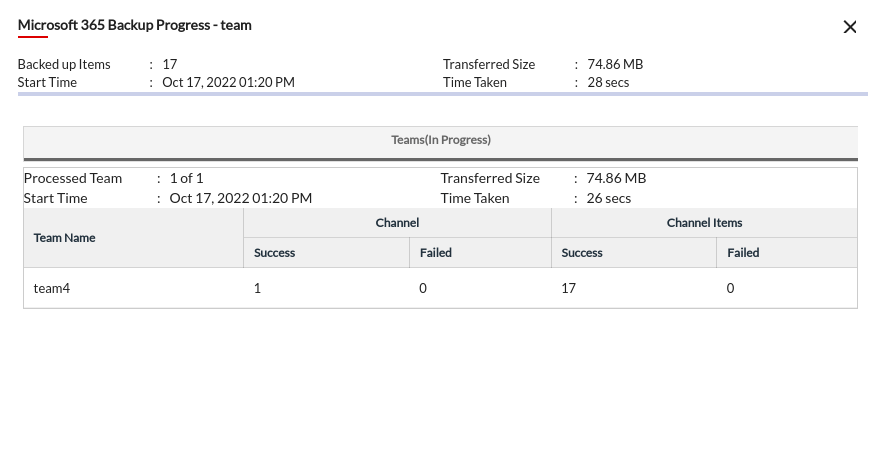
How to Restore Microsoft Teams:
1. Navigate to the Recovery page. All the backup jobs will be listed here. Click on the ‘Restore’ button alongside the job you want to restore.
2. Choose Restore Type: On this page, select the ‘Restore Teams’ option and proceed.
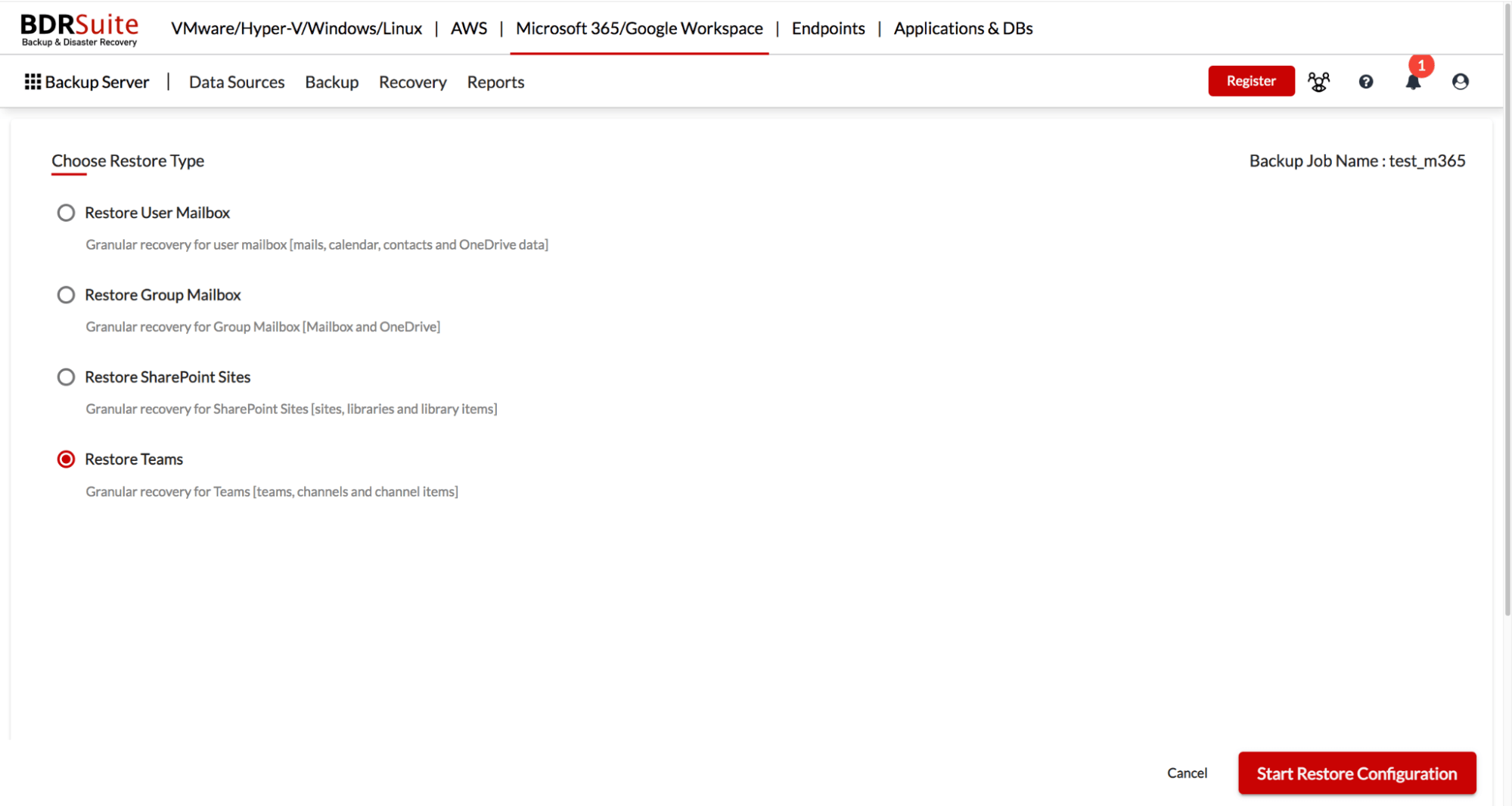
3. Then, select the restore version (from which backup you want to restore) and click next.
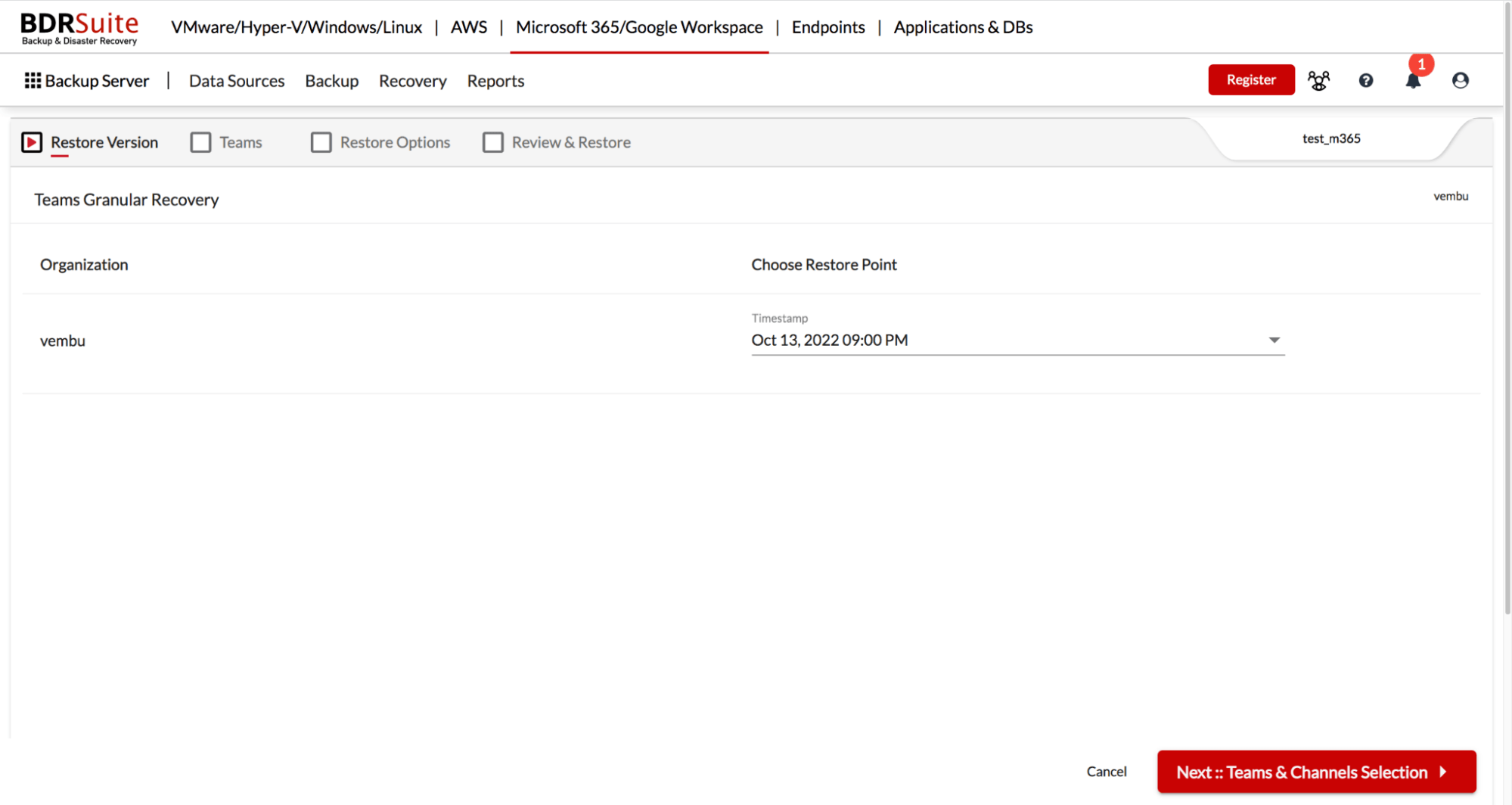
4. You can restore either the Team (or) Channel (or) Folder/Item. Select any of the Restore Data (Restore Teams / Restore Channel / Restore Folder/Items)
a). Choosing the Restore Teams option lets you select and restore the entire teams.
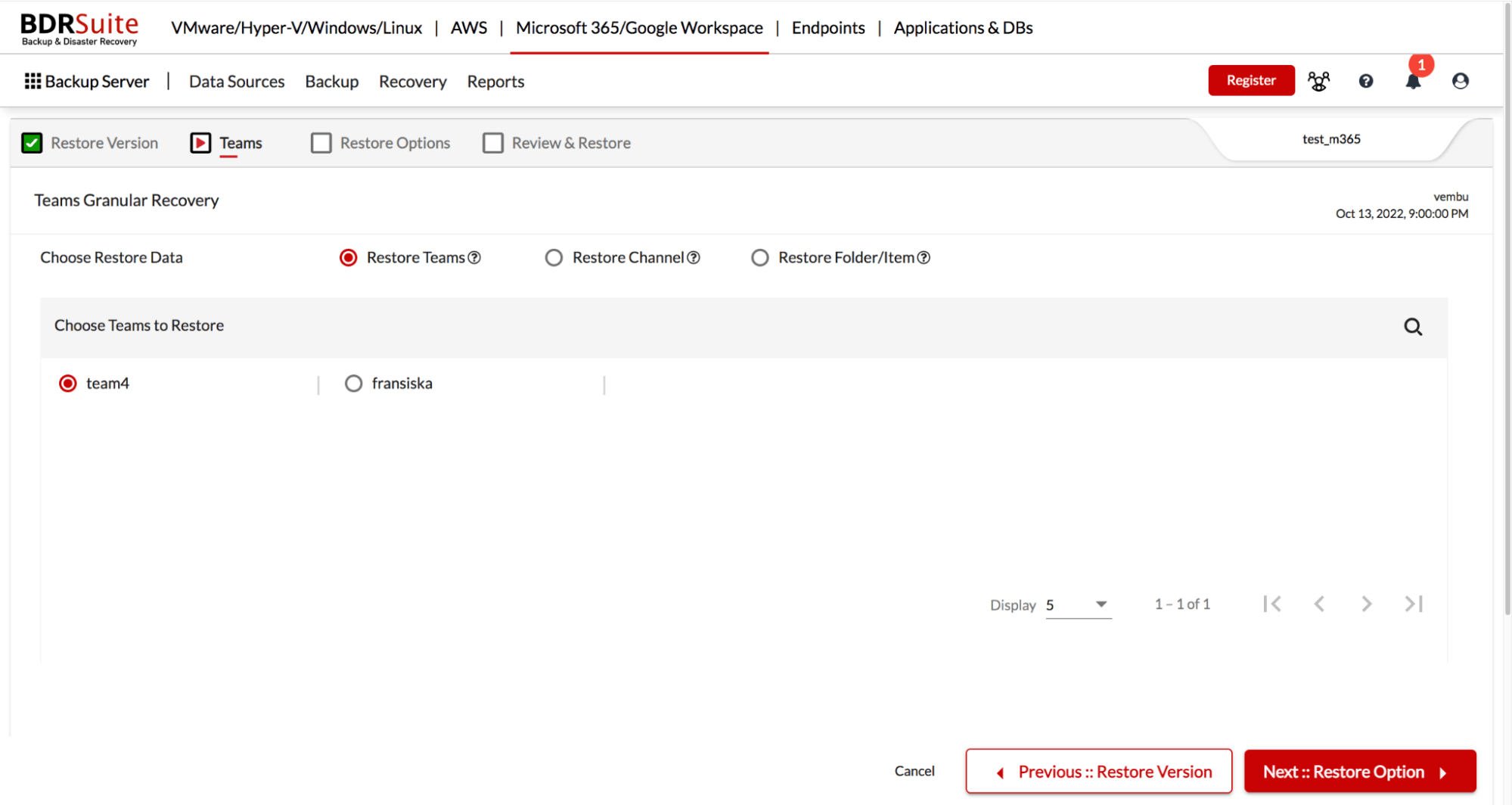
b). Choosing the Restore Channel option lets you select a Channel and restore the entire Channel of the Teams to the same/different teams.
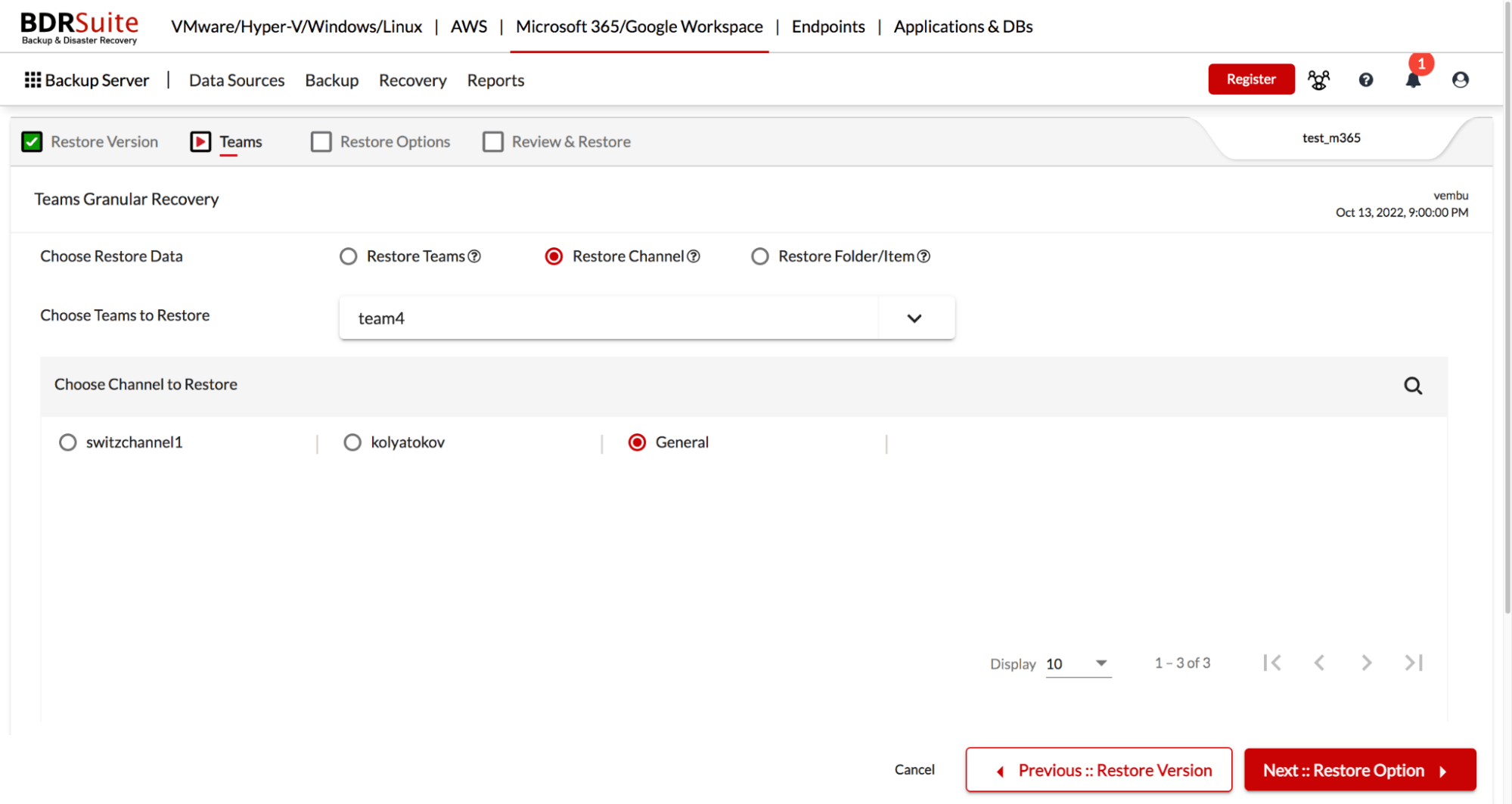
c). Choosing the Restore Folder/Items option lets you select and restore individual folders/items from the selected Channel/Teams
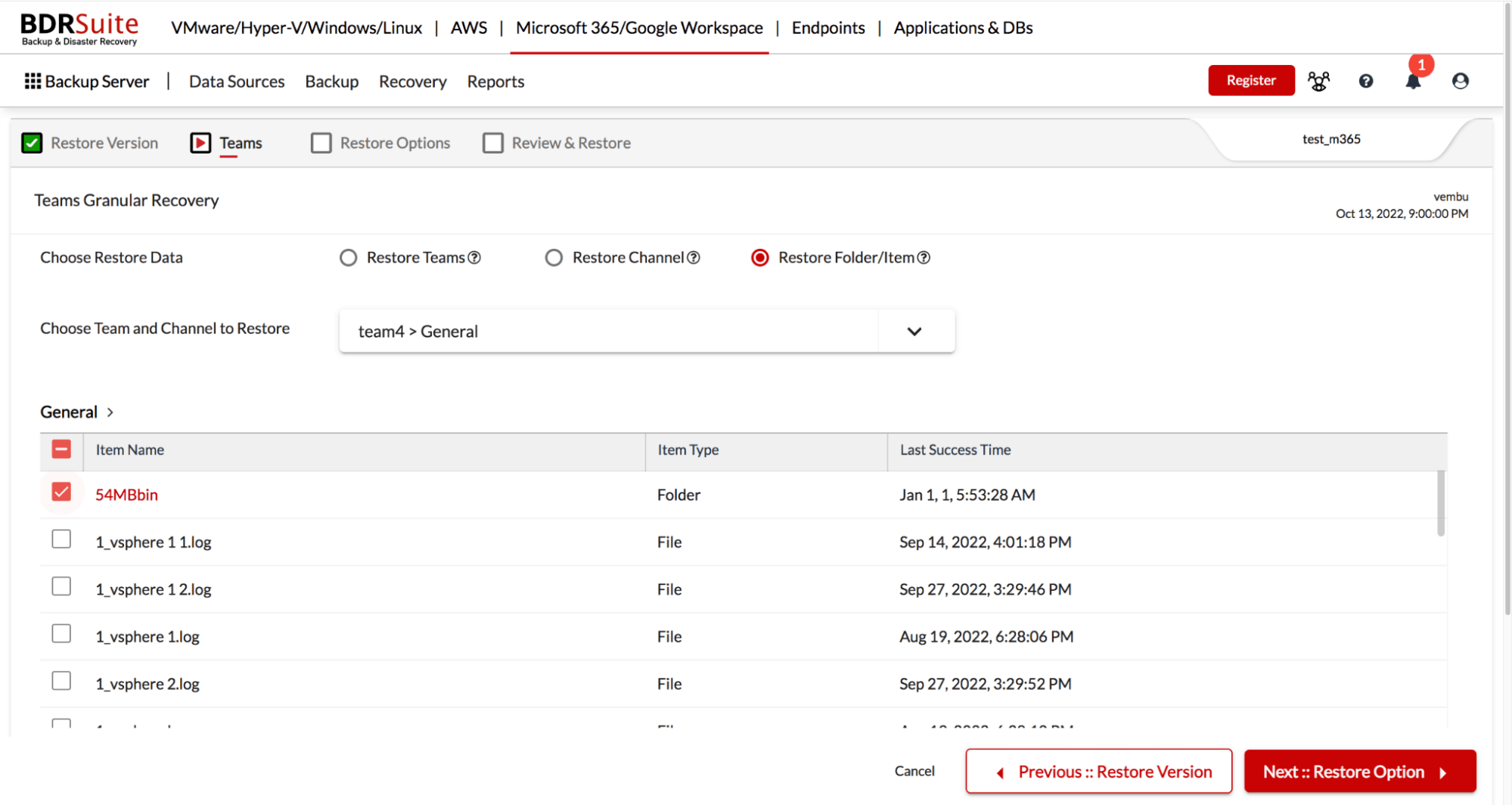
5. Restore Option: Once you have selected the ‘Restore Data’ choose the target to restore (Target Teams/Target Channel) which can be any of the following: Original/Existing/New Teams and Original/Existing/New Channel
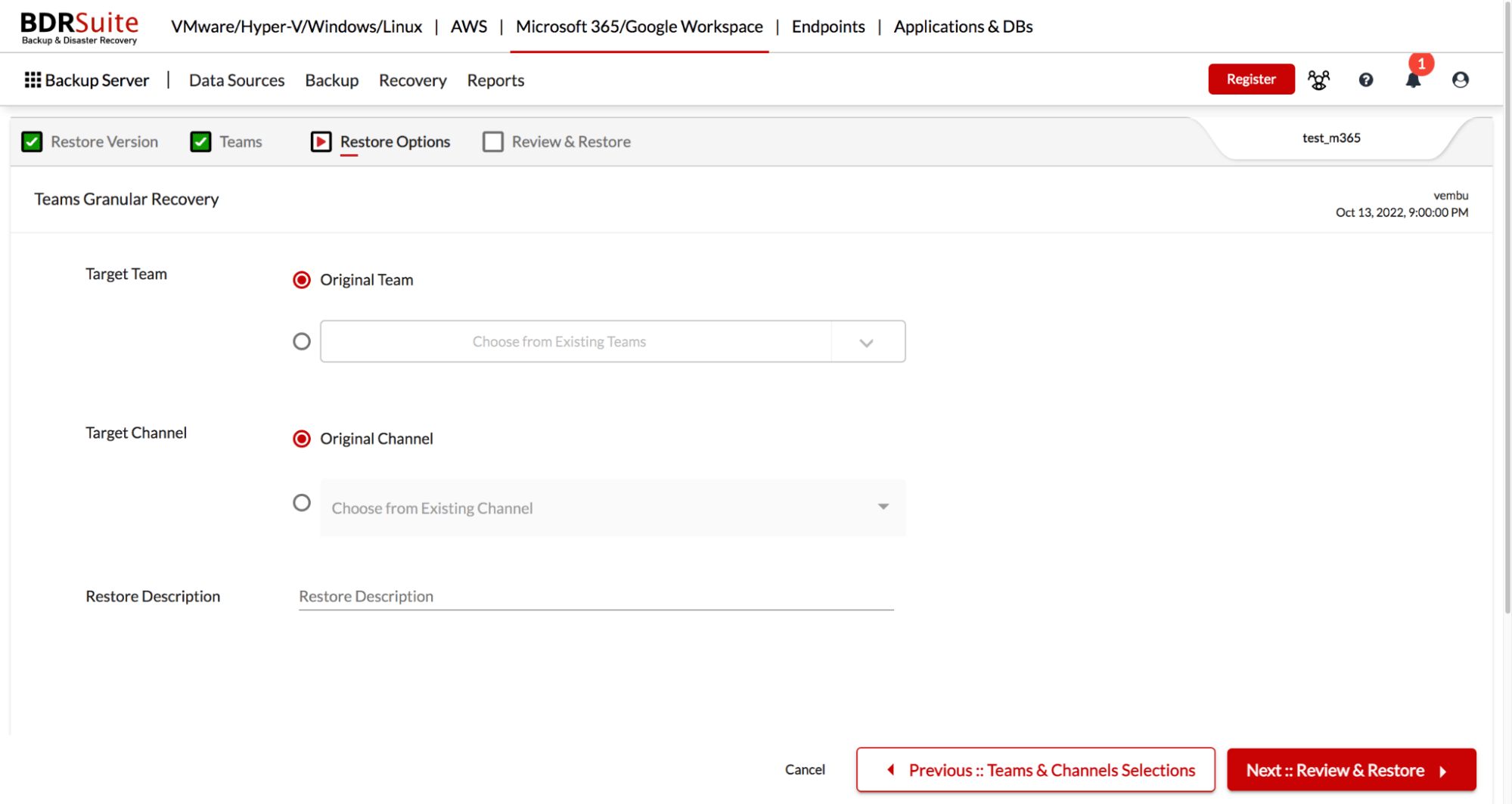
6. Review & Restore: Review the restore configuration and click the ‘Restore’ button to initiate the recovery.
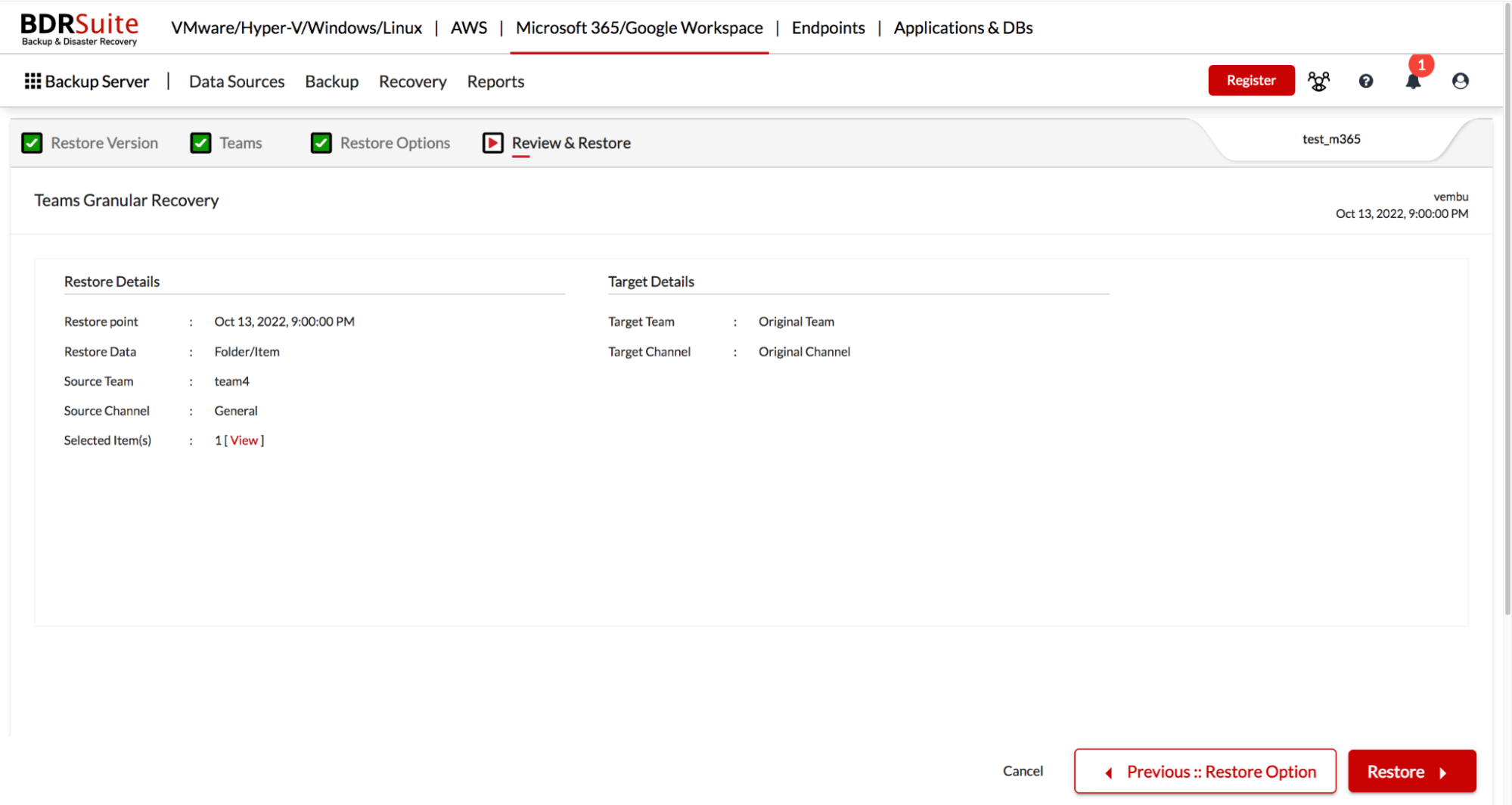
You can check the Teams restore progress from the recovery page. The Teams/Channel/Folder you chose to restore will be successfully restored to the chosen Target Teams/Channel.
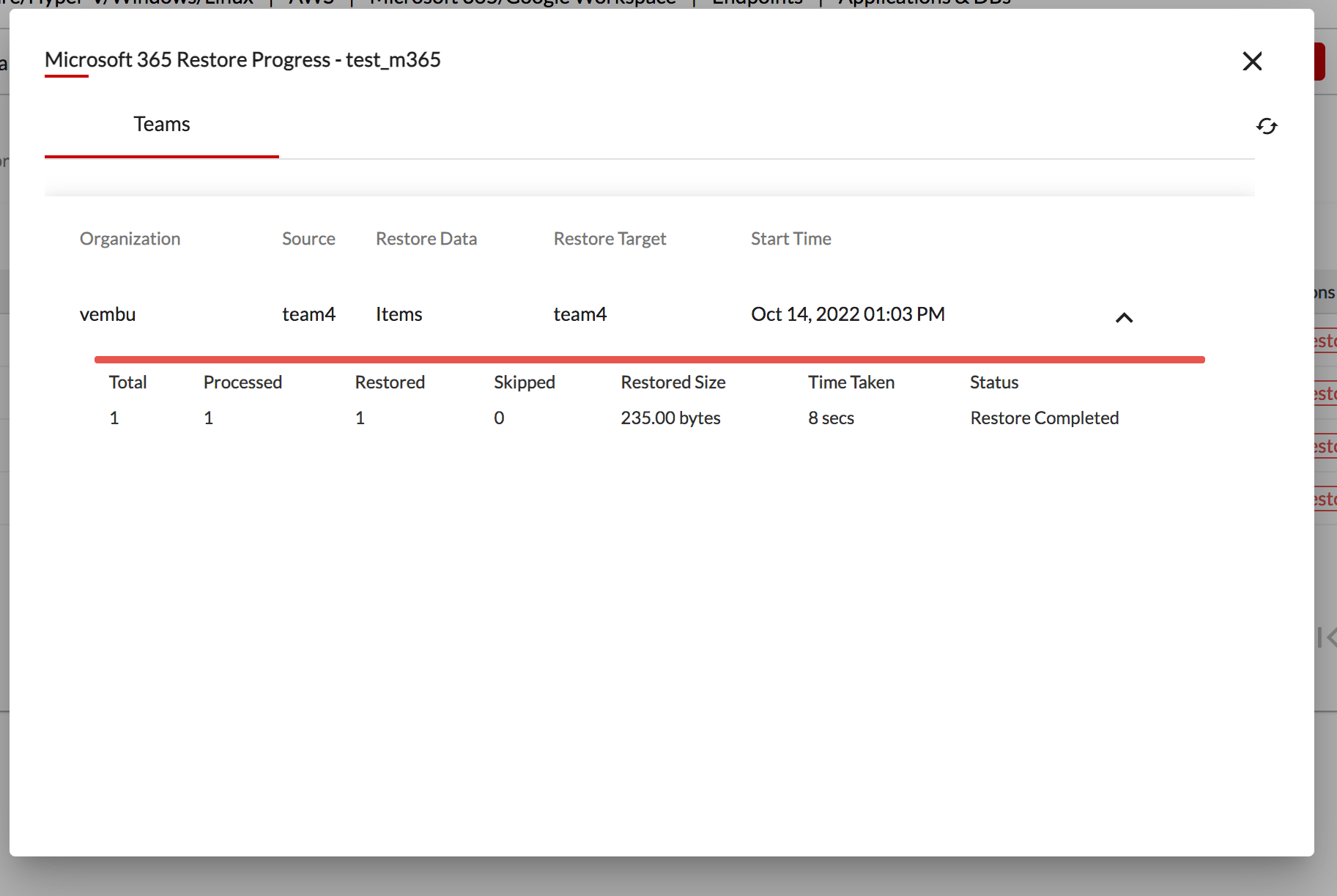
Be sure to download and explore BDRSuite in your environment with our fully-functional 30-day free trial version
Follow our Twitter and Facebook feeds for new releases, updates, insightful posts and more.



Leave A Comment